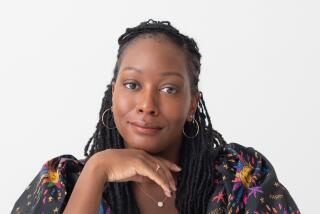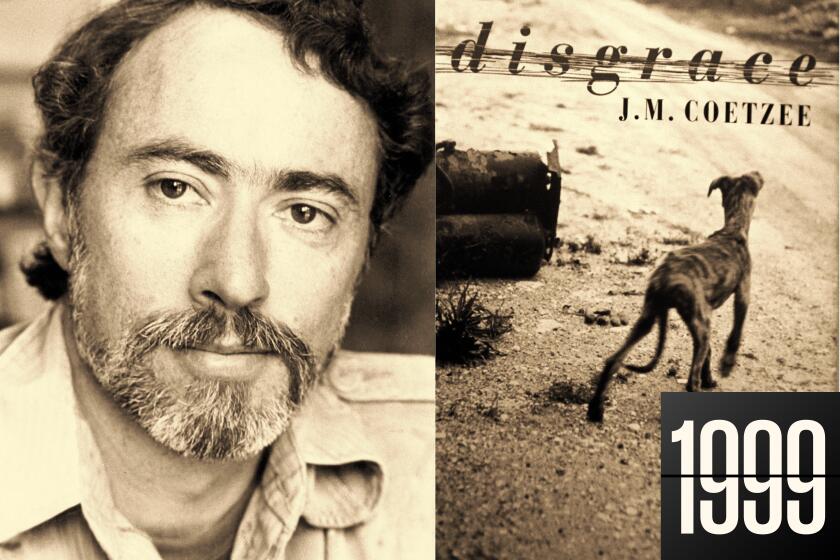‘The Mothers’ follows one couple’s attempt to adopt
Our cultural obsession with babies and motherhood has raged for decades. The media take stock of every new celebrity baby bump; women go to undreamed of lengths to procure progeny, freezing eggs, implantation and surrogates.
As in the culture at large, mothers are ubiquitous in Jennifer Gilmore’s new novel. They push double strollers, sit beside their kids at brunch, hold their newborns on their laps at picnics and pour themselves Pinot while their kids color beneath their feet like good dogs. Mothers-to-be “about to pop” rub their bellies and ask one another when they are due.
In this baby-centric world, Gilmore’s childless narrator, Jesse, feels ignored and invisible.
“The Mothers” opens with Jesse, exhausted from years of unsuccessful fertility trials, turning to adoption. Rejected by Manhattan’s major international adoption agency because she has had (and recovered from) cancer, she and her husband, Ramon, drive to North Carolina to register with a Southern agency.
In Raleigh they learn the ins and outs of open adoption. They hear studies suggesting open adoption is better than traditional adoption for the child and the birth mother and are told that the birth mother will become, in some capacity, a part of the adoptive family. They are taught how to write a letter that will convince birth mothers they are the right couple to raise a baby and take friendly pictures of themselves for their profile on the agency’s website.
When told that many of the birth mothers eventually lose contact with the adoptive families, Jesse wonders aloud if “feeling left twice” is healthy for anyone: “What about the child’s grief?”
Ambivalence about sharing the role of mother — and the adoption process in general — seeps deeply into this narrative. Jesse refers to the Southern adoption agents as “Tiffany or Crystal” and resents having to rewrite her birth mother letter repeatedly, adding such idiotic phrases as “we look forward to our little one giggling as they squish the berries in his or her hands as we bake our blackberries into yummy pies.”
As the process unfurls over months, Jesse is nearly hysterical with anxiety, hope and cynicism. The stakes are high: Her own mother worked and was emotionally unavailable, so Jesse feels the only way to “fix the past” is to raise a child of her own. “If you cannot be a mother, how do you fix the way in which you were mothered?” Jesse asks.
While the adoption story moves the plot forward, the book also lays out many types of mothers before us. Besides Jesse’s own aloof, working mom, there is Ramon’s invasive mother, who, unasked, washes Jesse’s underwear and hangs it up outside on the line. Then there are Jesse’s friends — glamorous Brooklyn moms sitting at “a farmhouse table in someone’s tricked-out kitchen, sharing war stories of croup and incessant crying, night panics, time-outs or no time-outs, the protocol of the playground, as they wondered whether they’d ever go back to being the women they once were.”
The last mothers to enter the narrative are the birth mothers. The woman the couple ultimately adopts from is kept off stage; instead the narrative focuses on two potential birth mothers.
There’s Katrina, a 40-year-old who lives in a trailer and who, on her MySpace page, includes images of fairies and mermaids as well as a photo of man with a swastika tattoo and a block of text that reads “SS. White Girls Only.” Another potential birth mother, Heather, is a young woman who at first portrays herself as a middle-class teenager from Westchester but turns out to be a former prostitute living with her boyfriend in the Bronx. In the photo Jesse finds of Heather online, she has stringy hair, a ravaged face and eyes set deep in their sockets.
Gilmore has written elsewhere about her real-life open adoption process, about being scammed by fake birth mothers and also how she and her husband went through the emotional and morally terrifying experience of choosing not to adopt a baby born with Down syndrome. Open adoption can expose vulnerable potential mothers to the emotional whims of both pretenders and struggling birth mothers. I worried as I read, though, that Gilmore’s frustration at the adoption process influenced her portrayal of these poor and sometimes fragile women. The social experiment at work in open adoption is not about linking birth mothers that are identical to prospective parents but to partner with a mother that may be very different from oneself.
To her credit, Gilmore portrays Jesse as emotionally desperate and unstable as anybody in the novel. At one point, she cries over her barbecue sandwich, worried that the pig was mistreated, and sobs when she thinks that she will never see her pet’s puppies because the dog has been spayed.
Through Jesse’s obsession with motherhood we can feel not only her yearning but also the backbreaking weight of cultural expectation. “The Mothers” is a lunatic lullaby about one woman’s desire for a baby and for the transformative magic she hopes that child will bring.
Steinke’s most recent book is the memoir “Easter Everywhere.”
The Mothers
A novel
Jennifer Gilmore
Scribner: 288 pp., $26
More to Read
Sign up for our Book Club newsletter
Get the latest news, events and more from the Los Angeles Times Book Club, and help us get L.A. reading and talking.
You may occasionally receive promotional content from the Los Angeles Times.








